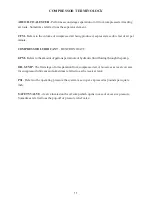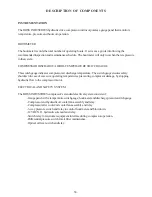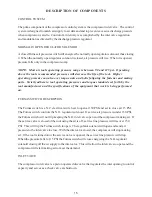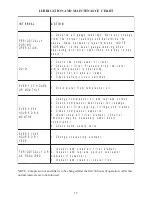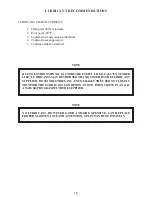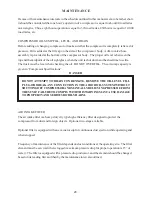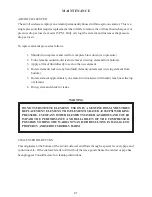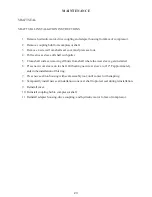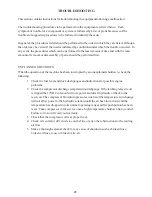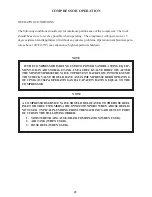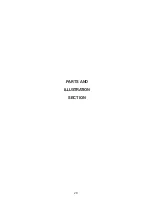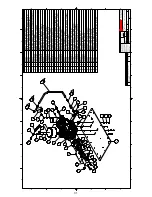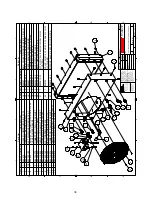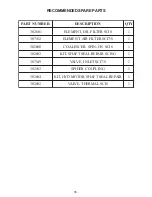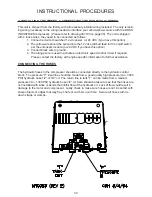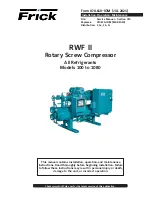
25
TROUBLESHOOTING
IMPROPER DISCHARGE PRESSURE
1. If discharge pressure is too low, check the following:
A. Too much air demand. (Air tools require more air than what the compressor can
produce, air tools are free wheeling without resistance.)
B. Service valve wide open to atmosphere.
C. Leaks in service line.
D. Restricted compressor inlet air filter.
E. Faulty control system operation (i.e.N.0. regulated air solenoid is allowing air through
all the time.)
F. Furnas Switch is not closing at 115 psi.
G. Low compressor oil level.
2. If discharge pressure is too high, safety valve blows, or system shuts down on high pressure,
check the following:
A. Faulty discharge pressure switchgauge.
B. Coalescer plugged up.
C. Faulty safety valve.
D. N.O. regulated air solenoid is not opening.
E. Furnas switch is not opening at 150 psi.
3. Sump relief valve activates:
A. Inlet valve leaking or open.
B. Faulty relief valve.
C. Faulty Furnas switch, or N.O. regulated air solenoid, or pressure switchgauge.
SUMP PRESSURE DOES NOT BLOW DOWN
If after the compressor is shutdown, pressure does not automatically blow down, check for:
1. Normally open regulated air solenoid may be stuck closed.
2. Blockage in air line from downstream of the coalescer to the inlet valve.
3. Inlet valve orifice is clogged.
OIL CONSUMPTION
Abnormal oil consumption or oil in service line, check for the following:
1. Over filling of oil sump.
2. Leaking oil lines or oil cooler.
3. Plugged oil return line: check nozzle beneath the sightglass.
4. Defective coalescer element.
5. Compressor shaft seal leakage.
Summary of Contents for Infinity
Page 2: ......
Page 4: ......
Page 9: ...10 SAFETY ...
Page 28: ...29 PARTS AND ILLUSTRATION SECTION ...
Page 34: ...35 ...
Page 41: ...42 WARRANTY SECTION ...

